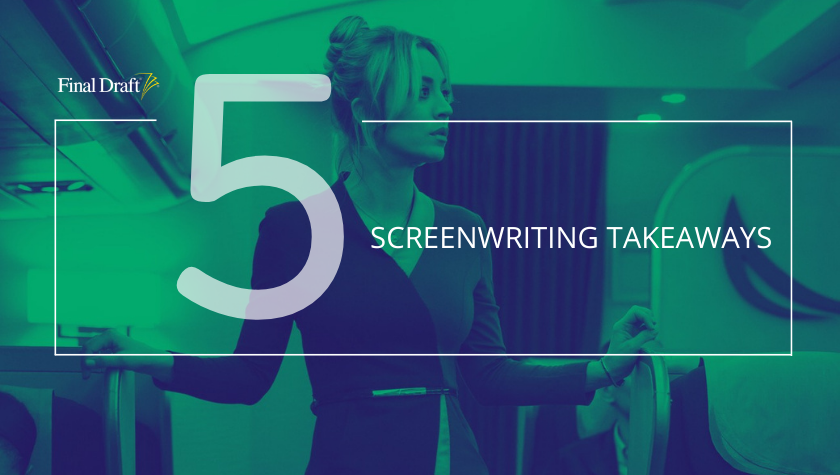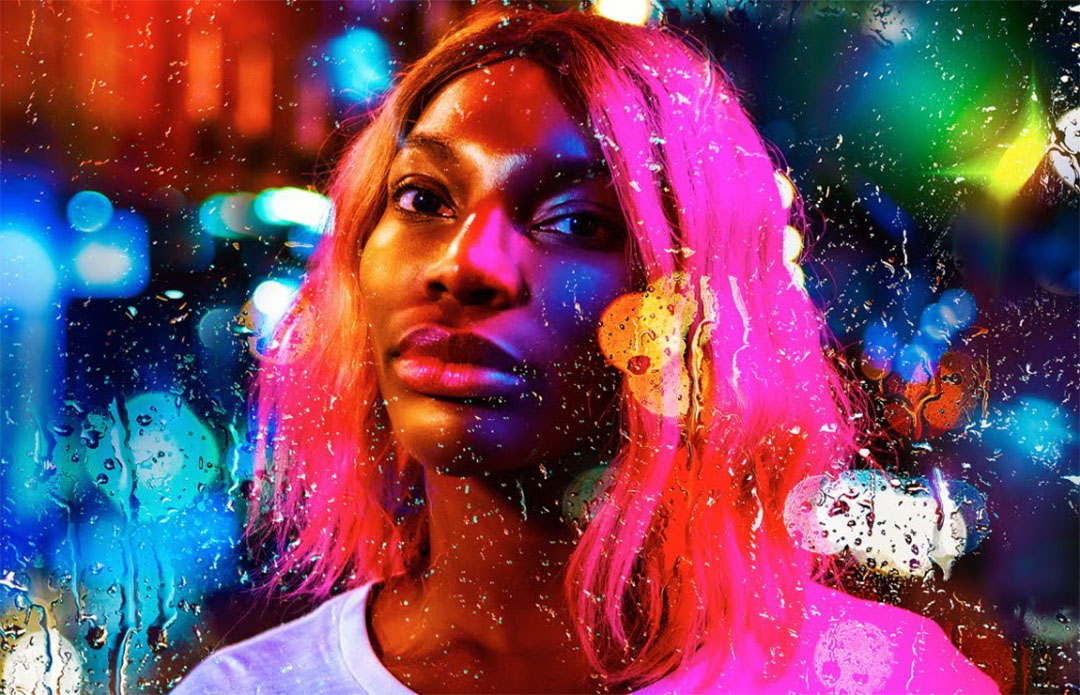5 Takeaways: The Babysitters-Club on Netflix
July 8, 2020
While 2020 has been unexpected, to put it kindly, sometimes wholesome content comes along that feels like the balm we all need. The Baby-Sitters Club is exactly that. If you are a woman of a certain age, it’s likely you devoured the original book series as a pre-teen. But being familiar with the books isn’t required to appreciate this inclusive series about smart, tween entrepreneurs who value friendship and childcare above boys and school drama.
The Baby-Sitters Club does a lot of things well, particularly adapting beloved characters from the books: Kristy, Claudia, Stacey, Mary Anne, and Dawn (don’t be surprised if you soon find yourself filling out a Buzzfeed quiz to see which Baby-Sitters Club member you are). The writers deftly put the reader in the brain space of our heroines through the use of voiceover, perhaps the most controversial screenwriting element of all. Screenwriters are often told to avoid the use of voiceover at all costs, that it is a crutch, and one better have good reason for employing the device. Nonetheless, when used effectively, truly nothing else can more directly put you in the mind of a protagonist. Baby-Sitters Club is a powerful case study of how it’s done well.
- Voiceover for characterization. The Baby-Sitters Club is like a storytelling round robin. Each girl gets to be the focal point of her own episode, and her own story. In the pilot, Kristy’s Great Idea, the audience quickly gets inside Kristy’s brain as she births The Baby-Sitters Club into existence. The show even frames every girl's episode with an individual notebook, literally opening each of their stories on a fresh page. Kristy asserts herself as an opinionated feminist at the top of her episode, proclaiming, “I did most of the talking” as she walks home with best friend (and more reserved) Mary Anne. Kristy’s voiceover also nicely subverts what’s happening on screen, as she has her big idea right when her Mom is performing the Heimlich maneuver on her. “I suddenly had it, the best idea of my entire life,” Kristy muses with a huge smile on her face post-choking. Through her voiceover (and every subsequent storyteller’s throughout the series) the audience quickly grasps what kind of young entrepreneur they are getting in the first few lines of introspective reflection of the episode. It is stylistically intentional that it feels as though a friend has stumbled upon their best friend’s diary entry; like The Baby-Sitters Club saved you a seat on the couch at their sleepover.
- Voiceover for efficient exposition. Claudia has a lot going on in her debut episode, Claudia and The Phantom Phone Calls, and her voiceover often serves to help carry the action along at a rapid clip. Claudia is dealing with a first crush, the opportunity of going with a boy to a big costume dance, and the thought of failing her latest math test. The stakes of her episode are re-iterated frequently and efficiently in her voiceover: “The next day was my own moment of truth. Would tonight be a dream or a nightmare? Would I ride to the dance with Trevor, resulting in a life partnership and rise to the pinnacle of the art world, or would I have to spend the rest of my life at home…” While Claudia has an amusing sense of heightened stakes in her own life, she is also delivering exposition in a fun and quippy way—storytelling efficiency at its finest.
- Voiceover to reveal secrets. In The Truth About Stacey, the girls learn a big reveal about their most mysterious friend. Stacey has been carrying around a big secret, and the audience gets let into Stacey's hush-hush private life as she grapples with how she will ever—and if she should ever—reveal her secret to her new friends. The use of voiceover gives audience insight to character backstory before it's fully revealed to the rest of the ensemble, which can heighten stakes for the audience. While trying on clothes, Stacey confesses, “If they ever came over for a sleepover, or even just to hang out, it would be a lot harder for me to hide this…” The voiceover seamlessly blends to a visual reveal of Stacey’s blood sugar monitor and her diabetes diagnosis—a piece of backstory that is often called upon for Stacey’s internal and external conflict throughout the series. Voiceover is perhaps most aptly used to let audience members hear a secret before characters are let in on what’s happening.
- Voiceover to reveal theme. This update of The Baby-Sitters Club is decidedly joyfully feminist. Creator of the book series Ann M. Martin was inspired by her days at Smith College fighting for the Equal Rights Amendment when she started working on the book series. The voices of the club members always underscore a theme of empowerment in their episodes. Particularly notable this season is Mary Anne Saves the Day, in which Mary Anne struggles to assert herself, but also finds her voice when standing up for a Trans girl who gets misgendered while in Mary Anne’s care. “There wasn’t anyone else coming to save the day. There was only me,” she states. And Mary Anne indeed finds her voice to help those that need a strong baby-sitter to stand up for them.
- Voiceover for structure. Every episode of The Baby-Sitters Club is flanked by voiceover, even if the character’s voice remains sparse throughout the rest of their particular episode. The girls bookended words give a sense of elegy, of a lesson learned, and a feeling of accomplishment. These young women are working confidently to becoming well-rounded adults. Their conflict does not stem from traditional antagonists (although the knock-off Baby-Sitters Agency does pose a viable threat to their business). Rather, they are on a journey to finding the goodness in caring for others. Their interpersonal conflicts are minor, because their larger philosophical conflicts ask bigger life questions, and that’s what makes the show such a treat. The voiceover framing bookends help call back to memory all there is to love about every episode, not to mention offer a sense of nostalgia for the books. In Kristy’s Big Day, Kristy encapsulates perhaps her biggest lesson of all: “I started The Baby-Sitters Club to take care of kids, but what I didn’t realize is, I also started it to take care of me.”
Final Takeaway: Screenwriting rules are sometimes made to be broken, and while many books and courses may advise a screenwriter to steer clear of voiceover, to use it sparingly, or to ask if a script is stronger without it, sometimes what a writer needs to deliver is a dose of elegy and nostalgia, and as much darn voiceover as their heart desires. The Baby-Sitters Club is an excellent argument for letting voiceover guide the way.
Written by: Lindsay Stidham
Lindsay holds an MFA in screenwriting from the American Film Institute. She has overseen two scripts from script to screen as a writer/ producer. SPOONER, starring Matthew Lillard (SLAMDANCE), and DOUCHEBAG (SUNDANCE) both released theatrically. Most recently Lindsay sold PLAY NICE starring Mary Lynn Rajskub. The series was distributed on Hulu. Recent directing endeavors include the Walla Walla premiering (and best screenplay nominated) TIL DEATH DO US PART, and the music video for Bible Belt’s Tomorrow All Today. Lindsay is currently working on an interactive romcom for the production company Effin' Funny, and a feature film script for Smarty Pants Pictures. Lindsay also currently works as an Adjunct Screenwriting Faculty member at USC’s School of Cinematic Arts. You can follow her work here: https://lindsaystidham.onfabrik.com/- Topics:
- Discussing TV & Film




